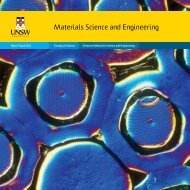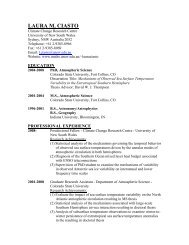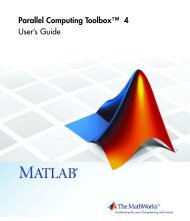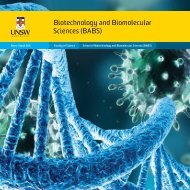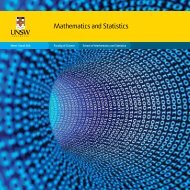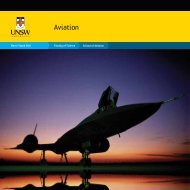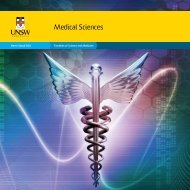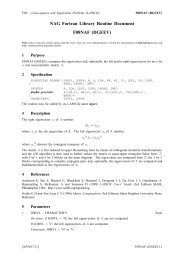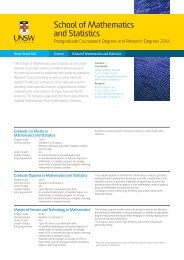2011 Postgraduate Research Competition - UNSW Science - The ...
2011 Postgraduate Research Competition - UNSW Science - The ...
2011 Postgraduate Research Competition - UNSW Science - The ...
Create successful ePaper yourself
Turn your PDF publications into a flip-book with our unique Google optimized e-Paper software.
Page |10<br />
Disentangling an entangled bank<br />
Raymond Blick and Angela Moles<br />
School of Biological, Earth & Environmental <strong>Science</strong>s<br />
Abstract<br />
<strong>The</strong> world we live in is inherently connected. But in a world with so many connections how do<br />
we disentangle any discernible structure from what appears to be chaos This line of thought<br />
has generated big ideas such as the 6 degrees of separation to Darwin’s curiosity with a<br />
tangled mix of plants at Down House. However the question remains, how do we disentangle<br />
the complexities that exist in the natural world One approach that has gained significant<br />
momentum is the use of network theory. Generating networks that portray multiple<br />
interactions has been applied to a range of disciplines including social networking,<br />
psychology, and ecology. My research focuses on network interactions between forest<br />
structure and arboreal plants. A variety of results have been revealed from this approach<br />
including (i) the level of antagonism between arboreal plants determines community<br />
structure, (ii) few host trees are responsible for maintaining significantly large populations of<br />
mistletoe's and (iii) similarities in leaf shape do not match network interactions, refuting the<br />
widely held view that mistletoe's mimic their hosts. <strong>The</strong> network approach provides a<br />
foundation for testing the biological processes underpinning community structure and a<br />
powerful approach to understanding a seemingly chaotic world.<br />
Abstract<br />
Contemplating the Curves!<br />
Vinod Maseedupally and Helen Swarbrick<br />
School of Optometry & Vision <strong>Science</strong><br />
Orthokeratology (OK) is a clinical contact lens-based technique in which specially designed<br />
rigid lenses reshape the cornea during overnight wear to temporarily correct refractive error<br />
after lens removal. During OK for myopia correction, the refractive outcome arises from lensinduced<br />
central corneal flattening and mid-peripheral steepening, which collectively result<br />
in reduced corneal power and a more spherical or oblate-shaped cornea. However the<br />
overall changes in corneal shape during OK are more complex, because normal corneal<br />
shape may vary from region to region. No previous studies have investigated differential<br />
effects of OK on different regions of the cornea.<br />
In preliminary studies, we have investigated the regional effects of spherical OK lenses on<br />
spherical corneas. This study showed non-uniform changes in corneal curvature in different<br />
corneal regions. <strong>The</strong> curvature in the temporal sector of the central zone flattened<br />
significantly (p



